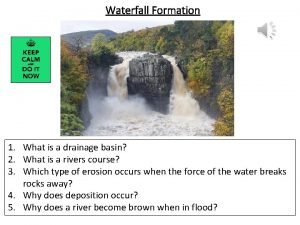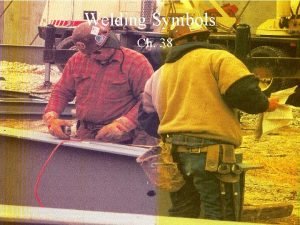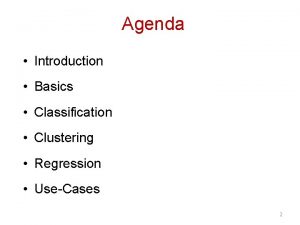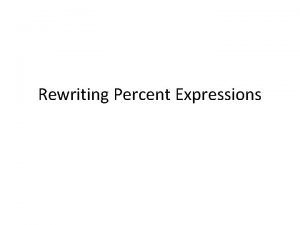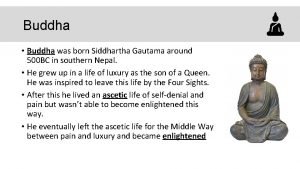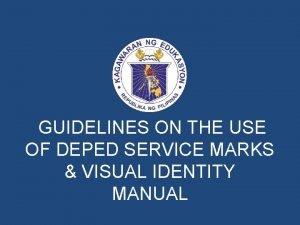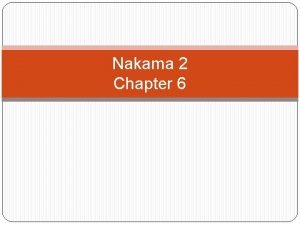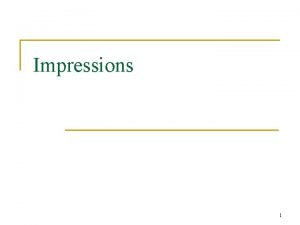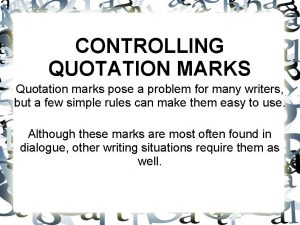A 01 12 marks A 02 12 marks
















- Slides: 16


A 01 (12 marks) A 02 (12 marks) A 03 (6 marks) • • Clear and intelligent interpretation of the poems Clear and precise comparison of the poems Select a wide range of quotations which justify your points Analyse the poets’ use of language Analyse the poets’ use of structure Clearly explain the effects on the reader Use subject specific terminology • Relate the poems to their historical and social contexts

What is Browning’s ‘My Last Duchess’ about? Knowledge ‘My Last Duchess’, by the Romantic poet Robert Browning, is half of a conversation, between a Duke and his visitor. We hear the Duke’s speech as he describes a painting on the wall. Skills: Close reading of the poem, focussed on meaning and content. Understanding: Annotate your anthology to demonstrate your understanding.

A Duchess is missing! Watch the video and listen carefully. Read along with the poem as you listen. The poem tells the story of the Duke (her husband) speaking to a man who is there to arrange the Duke’s next marriage. They are looking at a painting of the missing Duchess. The first time, I just want you to listen. We’ll listen to it a second time, and then I want you to make some quick notes on the following: 1) What do we learn about the Duchess? 2) What do we learn about the Duke who is speaking? 3) What do we learn about their relationship? 4) What do you think has happened to her?

A Duchess is missing! Go through the text of the poem in close detail and see if you can add any further comments to these four key issues 1)What do we learn about the Duchess? 2)What do we learn about the Duke who is speaking? 3)What do we learn about their relationship? 4)What do you think has happened to her? Let’s share your findings! Now annotate the poem with your understanding of what it’s about.

There is some debate as to the degree of the Duke's malevolence. Is he just a stuffy aristocrat who sent his former wife to a nunnery over her flirtatious nature; a greedy, manipulative man anxious about securing a sizable dowry from the father of his future wife? Or is he, as others see him, a psychopathic murderer with an insatiable lust for ownership of all that he desires? The real story of the Duke of Ferrara suggests the former: it is now believed that his "last Duchess", Lucrezia di Cosimo de' Medici, died of Tuberculosis two years after her marriage to the Duke. It has been suggested by some analysts that the Duke must have killed the last Duchess because he twice remarks, "looking as if she were alive". Browning himself made it clear that it was his intention to have the Duke a murderer, and perhaps he'd have preferred we assume it so for the purposes of the poem. Many see the Duke as a pretentious name-dropper. That appears to be the case, particularly when he mentions the sculptor -- Claus of Innsbruck -- who cast Neptune taming a seahorse in bronze for him The Duke ensures that the listener is made well aware of the name in an attempt to raise his own stature by association. However, earlier in the poem he says "I said Fra Pandolf by design". He stresses "Fra" Pandolf for a different reason: not to name-drop but to make a point of the Duchess's flirtations with the likes of anyone. Fra Pandolf is, we suspect, a very good painter -- but he is also a monk. And monks are supposedly celibate. The Duke infers a belief that a virtuous woman would not allow herself to blush in the presence of a man of religion. It's clear that he thinks this is an indication of sexual arousal. He thinks that she would have taken the painter's comments -- whatever they may have been because the Duke was obviously not present during the sitting: he says "Perhaps Fra Pandolf chanced to say" -- as flattery; whereas, as far as the Duke is concerned, the painter would have had nothing other than the most professional of intentions in mind. In a sense, the Duke is trying to ease his conscience, if he has one at all, by telling the listener about his former wife's indiscretions. He makes her out to be a floozy who could flush with excitement over anything and anyone. At the same time, though, he gloats over his position and his ability to dispose of her at his whim, sending an unmistakable warning to the listener -- whose job it is to act as a conduit between the two parties -- that the next Duchess should behave in accordance with the snobbish requirements of peerage as well as the expectations of a husband prone to jealousy. She should expect neither guidance nor tuition in the matter following the marriage; the Duke has plainly disclosed that he chooses "never to stoop'. Browning's intention, it is thought, was to satirise the superior attitudes of the elite and, in particular, the attitudes towards women of position during his time. This is (part of) a comment left under the Youtube video. How do you think the answer would be marked against AO 1? How could it be improved? A 01 • Clear and intelligent interpretation of the poems • Select a wide range of quotations which justify your points

How is Browning’s ‘My Last Duchess’ written? Knowledge Browning offers us not quite a dramatic monologue, but half of a dialogue. It contains clear language devices. Skills: Close reading of the poem, focussed on language and structure. Understanding: Annotate your anthology to demonstrate your understanding.

Read the sheet of notes on language use in ‘My Last Duchess’. Write a summary of how the poet has used language to present the Duke and his personality. • Analyse the poets’ use of language A 02 • Clearly explain the effects on the reader • Use subject specific terminology

There is only one speaker in the poem, despite it being taken from a conversation. The poem is written in iambic pentameter and in rhyming couplets. This is one long speech, pretending to be a conversation. It is divided up into rhyming couplets but to mimic unrehearsed speech there are lots of twists and turns within the lines, shown by a variety of punctuation (colons and lots of dashes as well as the usual commas and full stops). Although it is written in rhyming couplets - which would usually make it sound more memorable - the sense of rhyme is partly lost because there is so much enjambment. • Analyse the poets’ use of structure A 02 • Clearly explain the effects on the reader • Use subject specific terminology

Why was Browning’s ‘My Last Duchess’ written? Knowledge Browning uses his poetry to talk about his views on society and the world around him. Skills: Link contextual factors to textual details. Understanding: Annotate your anthology to demonstrate your understanding.

Browning, as a Romantic poet, mistrusted and disliked the monarchy and the ruling classes. In 1561, the Duke of Ferrara’s wife, Lucrezia, died in suspicious circumstances. How did Browning portray the event in a way which got his social/political views across? Browning admired Shelley and shared his view that man’s pursuit of power was a bad thing. How does Browning portray the pursuit of power as negative in ‘My Last Duchess’? A 03 • Relate the poems to their historical and social contexts

How are ‘My Last Duchess’ and ‘Ozymandias’ similar? Knowledge Both writers are critical of the ruling class – they mistrust and dislike people in positions of power. Skills: Make connections between the two poems. Understanding: Write a thirty minute essay response to the comparison question.

Compare how Browning and Shelley portray the idea of power in ‘Ozymandias’ and ‘My Last Duchess’. A 01 Clear and precise comparison of the poems



 When to use an exclamation mark
When to use an exclamation mark Waterfall formation diagram
Waterfall formation diagram Welding symbols meaning
Welding symbols meaning Formative assessment marks
Formative assessment marks Jonbenét ramsey john andrew ramsey
Jonbenét ramsey john andrew ramsey Clustering vs classification vs regression
Clustering vs classification vs regression Percent expressions
Percent expressions Types of buddhism
Types of buddhism Glassonweb
Glassonweb Polygonal rifling
Polygonal rifling Put the correct punctuation marks in these sentences
Put the correct punctuation marks in these sentences First impressions four marks
First impressions four marks What are the 9 marks of a healthy church
What are the 9 marks of a healthy church 2020 deped service marks and visual identity manual
2020 deped service marks and visual identity manual Marcas de amor
Marcas de amor Marks and numbers example
Marks and numbers example Japanese quotation marks
Japanese quotation marks

